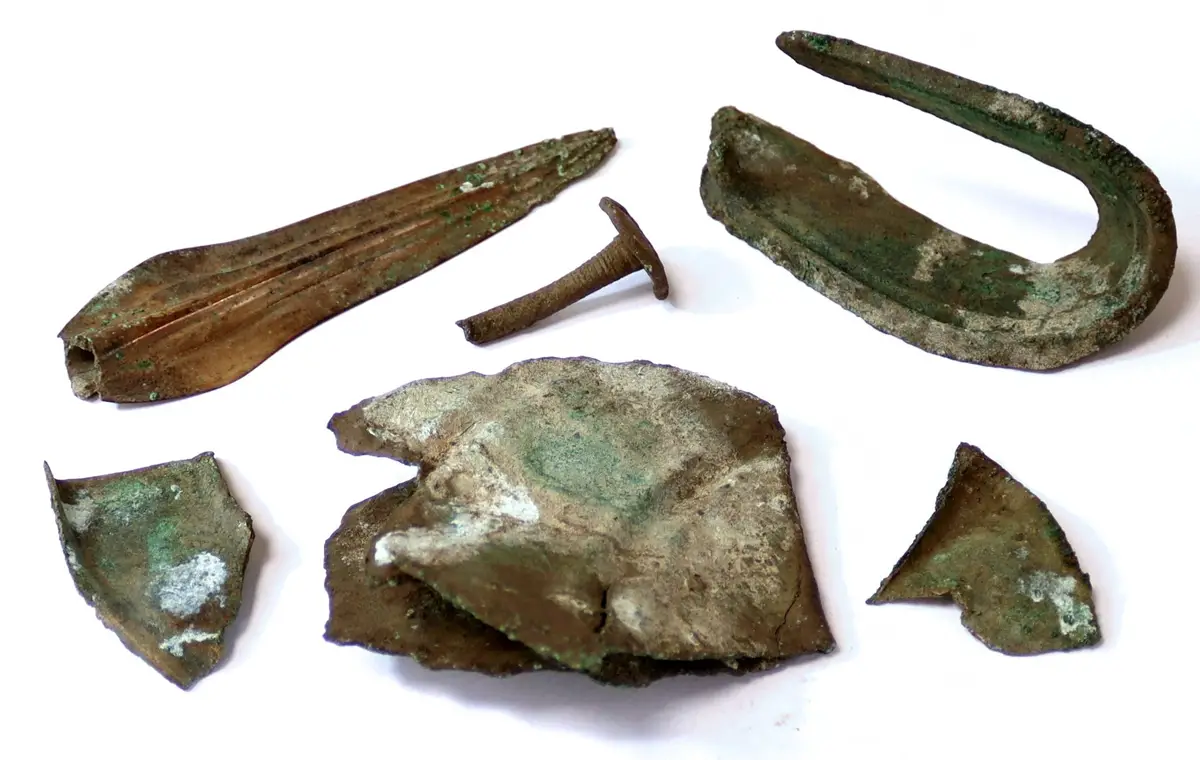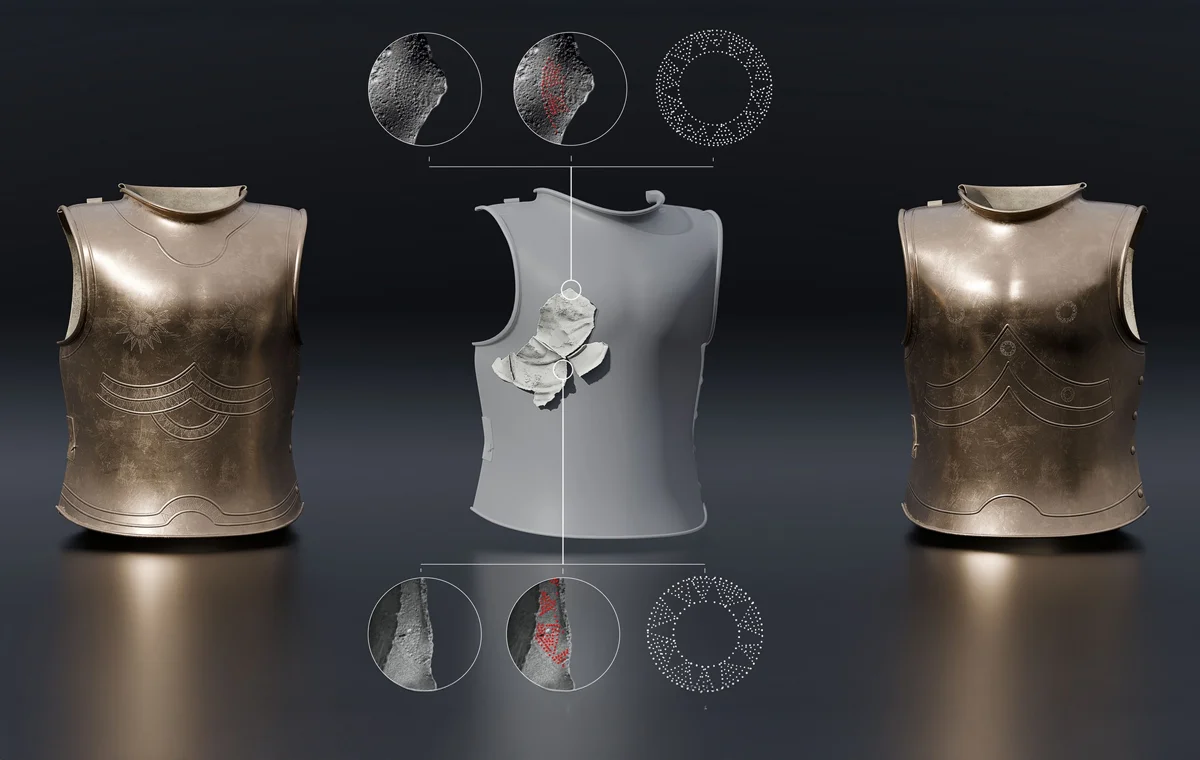Archaeologists from the Brno City Museum have announced the discovery of a bronze armour fragment dating from the Late Bronze Age.
The fragment was discovered at an undisclosed site in the South Moravian Region of the Czech Republic, alongside a spearhead, a sickle, and several metal fragments.
According to experts, the objects are part of a deliberate deposit, possibly as part of a ritual offering. One of the objects is a folded sheet of metal, that was later identified as part of a warrior’s breastplate.
“The fragment dates to 3200-years-ago – the period where historians place the Trojan War. Bronze weapons were then a privilege of the warrior elite, and their production required extraordinary craftsmanship,” said the Brno City Museum.

Archaeologist Aleš Navrátil explained that “unfolding” the fragment required advanced 3D scanning technology, enabling experts to digitally reconstruct the breastplate and its decorative features.
These features include a punched solar representation located around the nipples and triangular decorations within an embossed wave. According to Navrátil, this is the second only example of a Bronze Age breastplate found in the Czech Republic.
Zbyněk Šolc, director of the Brno City Museum, emphasised the significance of public cooperation in the discovery. He noted that responsible collaboration between professionals and the public is vital for uncovering and preserving artefacts that can deepen our understanding of ancient history.
This discovery also highlights the value of long-term partnerships and reinforces the cultural and historical significance of South Moravia in the broader context of European prehistory.
Header Image Credit : Brno City Museum
Sources : Brno City Museum





